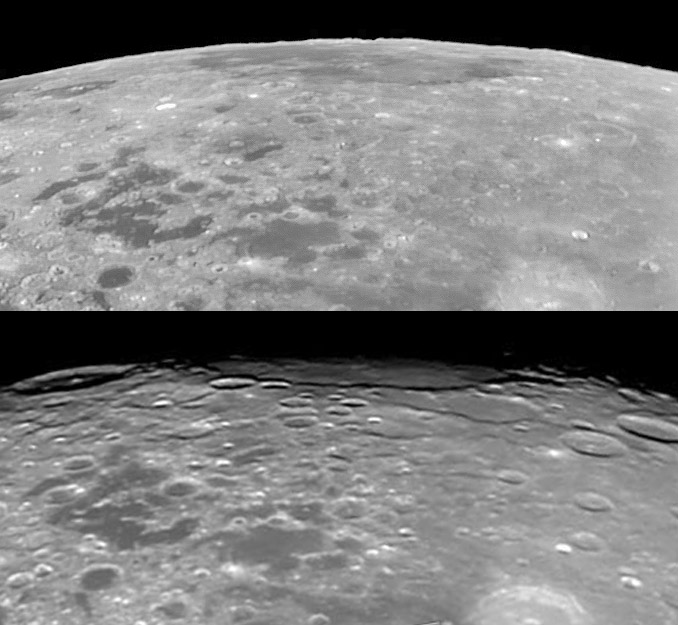
image by Gerardo Sbarufatti (top) and Tom Bash (bottom)
Impact basins are typically round depressions full of lava. Except often you can’t easily recognize the lava and the hole at the same time. That is often true for Smythii - either the mare is visible (top image) or, if you are lucky, the topography is (bottom image). Gerardo’s excellent high Sun view shows the differences in brightness of the mare, which are due to differences in age, composition and dusting by highland ejecta. Tom’s excellent low Sun image shows a long curved shadow cast by the basin rim, which rises a surprising 5 km above the center of the basin floor. I have only observed this rim shadow twice and was pleased both times to see evidence for the rim. On the high-Sun image, there is additional evidence for the rim - the far rim of the basin is visible, making a roughness on the horizon.
Technical Details:
Top: Dec 10, 2005, Celestron 8 + Phillips Vesta Pro + red filter.
Bottom: Oct 17, 2005, Celestron 9.25 + NexImage web cam.
Related Links:
Rükl plates 38 & 49
Tom’s website
Gerardo’s website
SUPPORT LPOD - VISIT A SPONSOR (CLICK AN AD BELOW)!
Now you can also support LPOD when you buy any book from Amazon thru LPOD!
COMMENTS?
Click on this icon File:PostIcon.jpg at the upper right to post a comment.



